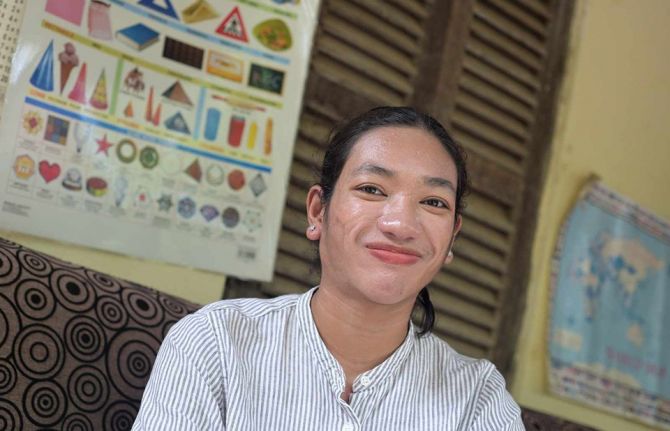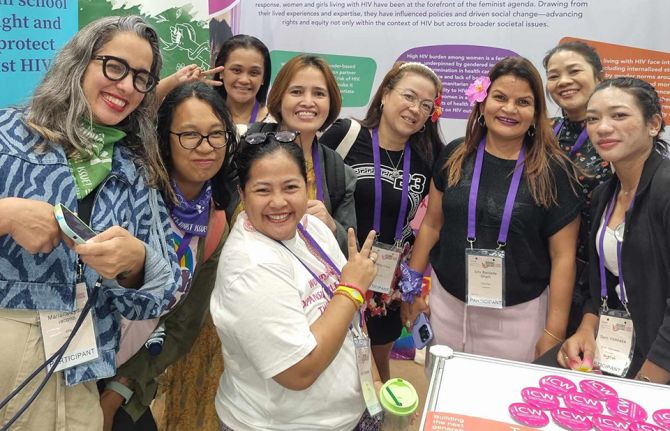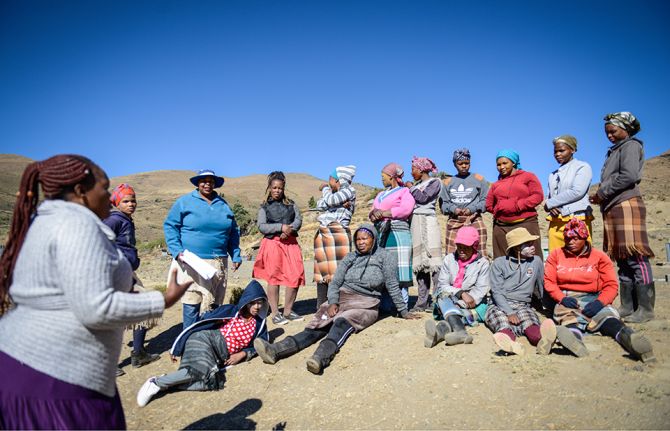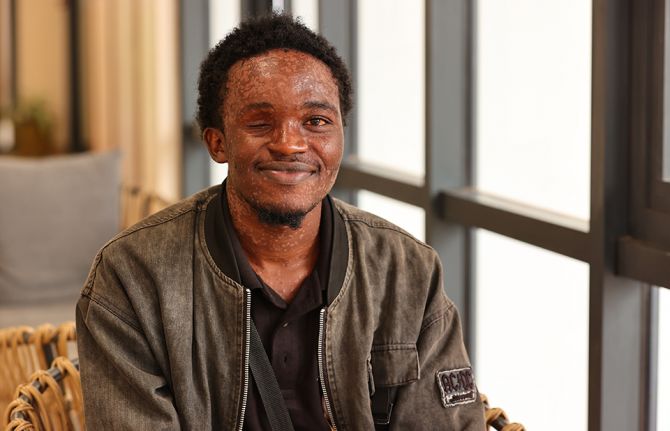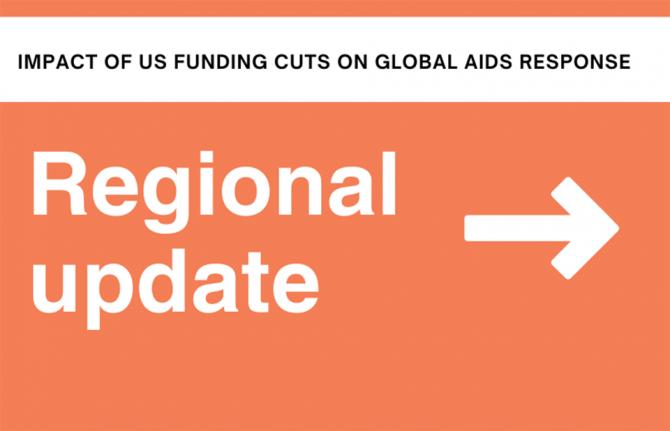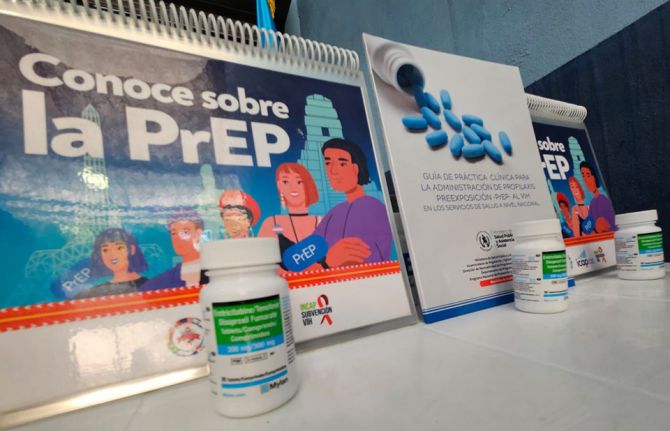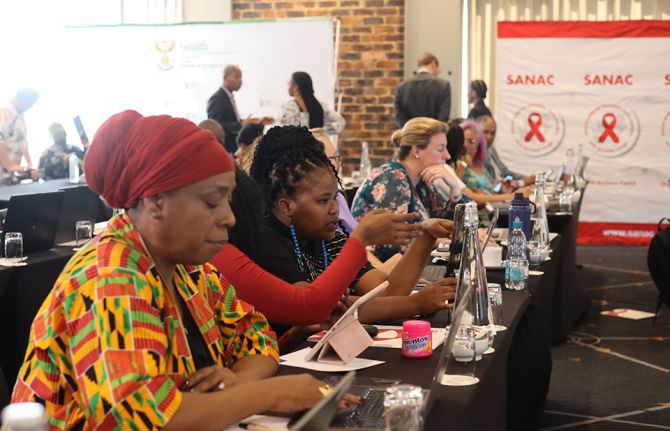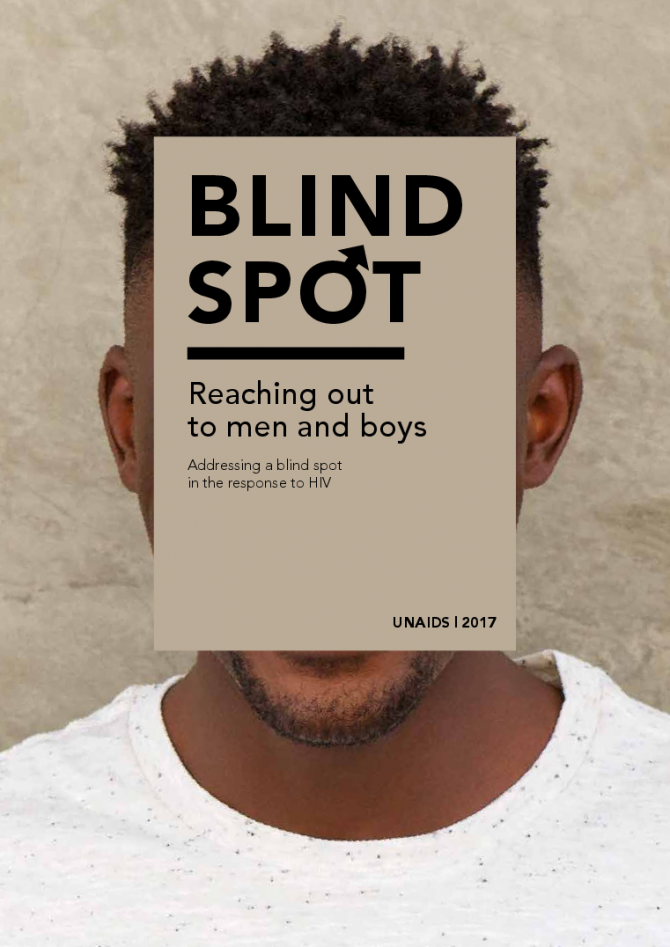

Update
PEPFAR announces continued progress against HIV
06 December 2017
06 December 2017 06 December 2017New results from the United States President’s Emergency Plan for AIDS Relief (PEPFAR) announced on World AIDS Day 2017 show strong advances in scaling up HIV prevention and treatment.
UNAIDS recently reported that nearly 21 million people living with HIV are accessing antiretroviral therapy—more than half of the 36.7 million people living with HIV are now on life-saving treatment. PEPFAR’s latest data show that PEPFAR supported more than 13.3 million of those men, women and children.
PEPFAR’s new data also indicate that there have been significant declines in new HIV infections among adolescent girls and young women. In the 63 districts of 10 African countries implementing PEPFAR’s pioneering DREAMS (Determined, Resilient, Empowered, AIDS-free, Mentored and Safe) public–private partnership, the majority (65%) of the highest HIV burden communities or districts achieved a greater than 25% decline in new HIV infections among adolescent girls and young women. Importantly, new HIV infections declined in nearly all DREAMS programme districts.
By the end of September 2017, PEPFAR had provided voluntary medical male circumcision to more than 15.2 million men and boys. This result was reached through the largest single-year increase (3.4 million) in new voluntary medical male circumcisions since the beginning of PEPFAR.
PEPFAR has supported more than 6.4 million orphans and other vulnerable children and their caregivers affected by HIV and has prevented HIV infection among 2.2 million babies born to women living with HIV.
The new data add to PEPFAR’s impact results released in the past year, which show that five African countries are approaching control of their HIV epidemics. They also highlight critical advances being made under the PEPFAR Strategy for Accelerating HIV/AIDS Epidemic Control (2017–2020), which was launched by United States Secretary of State Rex Tillerson at the 2017 United Nations General Assembly.
Quotes
“We are at an unprecedented moment in the global AIDS response. Our latest results clearly show the remarkable impact of the United States President’s Emergency Plan for AIDS Relief’s accelerated HIV prevention and treatment efforts.”
Partner


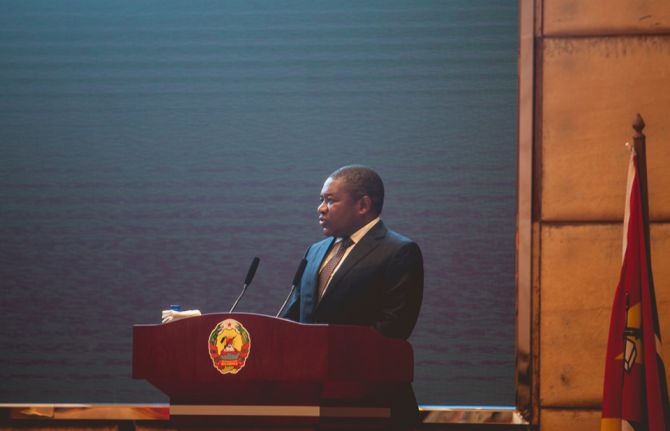
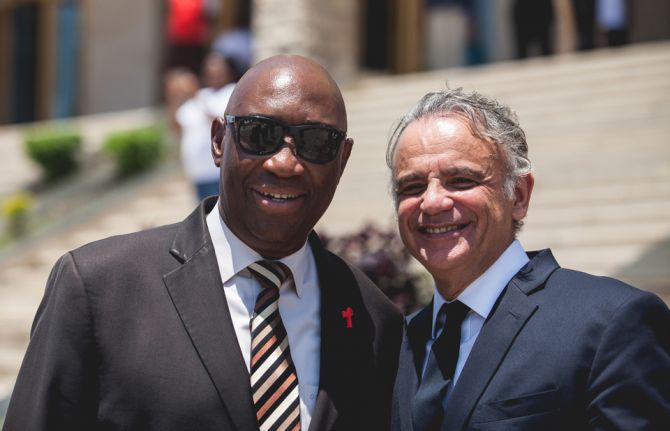
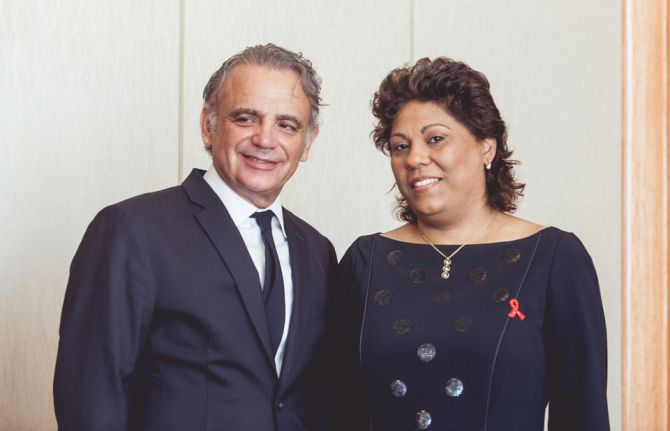
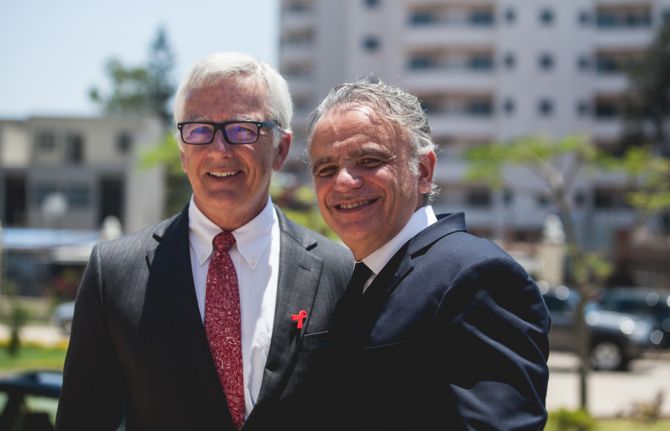
Update
Mozambique reinforces its commitment towards ending AIDS
02 December 2017
02 December 2017 02 December 2017The President of Mozambique, Filipe Jacinto Nyusi, chaired an extraordinary board meeting of the National AIDS Council on World AIDS Day in Maputo, Mozambique. The meeting brought together government representatives and community and religious leaders from all provinces of the country and national and international stakeholders to reinforce the country’s commitment towards ending AIDS as a public health threat by 2030.
In his opening speech, Mr Nyusi underlined that everyone, including community members, government representatives and religious leaders, has a role to play in the response to HIV and called on everyone to join forces to overcome the cultural barriers that are preventing people living with HIV and key populations accessing the services they need. He also stressed the importance of protecting adolescent girls and young women and emphasized that an innovative communication strategy will be required to bring about social change.
UNAIDS Deputy Executive Director Luiz Loures commended the country’s leadership for the progress made in the past 10 years, with almost 1 million people accessing antiretroviral therapy. He also stressed the importance of providing space and resources to communities, as they are key to advancing the response to HIV and to reaching populations that otherwise would be left behind. He also assured Mr Nyusi that UNAIDS will strongly support Mozambique’s efforts to end the AIDS epidemic.
Carlos Agostinho do Rosário, Prime Minister of Mozambique and Chair of the National AIDS Council board, chaired the open plenary discussion with community leaders. Nazira Abdula, Minister of Health of Mozambique, other cabinet ministers, Iolanda Cintura, Governor of Maputo City, and David Simango, Mayor of Maputo City, were among other high-level officials of the country present at the meeting.
The participants at the meeting agreed that scaling up HIV prevention programmes, putting communities at the centre of the response, addressing stigma and discrimination and focusing on achieving the 90–90–90 targets are urgently needed to step up the pace of the response to AIDS in the country.
Quotes
“It’s time for action. We need to Fast-Track the HIV response in a coordinated way, in partnership with all key stakeholders.”
“Community leadership, including civil society and traditional and religious leaders, play a central role in fostering community dialogue in responding effectively to HIV.”
“Strengthening HIV integration with broader health problems to maximize investments in the AIDS response remains a priority for Mozambique.”
“Thank you to the President of Mozambique and to his entire government for demonstrating the urgency required for the response to HIV today.”
“We must use our influence and our voice as political, public health, community, religious, and family leaders to demand that all people are afforded basic human rights and treated with respect and dignity.”
“We need to reinforce HIV prevention, intensifying new actions in a coordinated way, involving all key stakeholders and partners.”
Region/country
Related

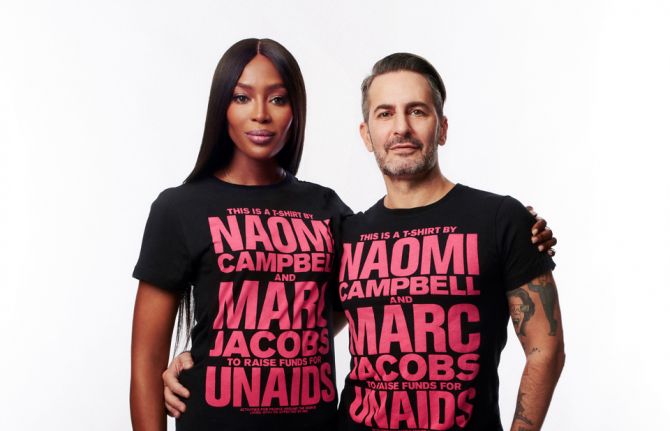

Press Release
Naomi Campbell, Marc Jacobs and UNAIDS announce collaboration on limited edition T-shirt for World AIDS Day
01 December 2017 01 December 2017GENEVA, 1 December 2017—The celebrated fashion designer Marc Jacobs has designed a limited edition T-shirt to raise funds for UNAIDS’ activities in support of people around the world living with or affected by HIV. The T-shirt will retail for US$ 55 and is on sale at marcjacobs.com.
The T-shirt chimes with the theme of this World AIDS Day campaign, #myrighttohealth. Everyone, regardless of who they are or where they live, has a right to health.
Actress, model and activist Naomi Campbell came up with the initial idea for the collaboration.
“It felt only right to collaborate with Marc Jacobs,” said Ms Campbell. “Given his understanding of the global HIV epidemic and the many friends we have lost to the disease, there’s no one I’d rather work with to continue bringing awareness to UNAIDS.”
UNAIDS is excited to work with Ms Campbell and Mr Jacobs, who are both long-standing advocates for an AIDS response that leaves no one behind. The collaboration has been coordinated by the CAA Foundation, the philanthropic arm of Creative Artists Agency (CAA), which represents Ms Campbell.
“Naomi Campbell’s long history of commitment to humanitarianism is both remarkably commendable and genuine,” said Mr Jacobs. “I was honoured to be asked by her to collaborate on this T-shirt in support of UNAIDS as a continued effort to raise awareness for this globally important cause.”
Ms Campbell and Mr Jacobs particularly want to raise awareness about the vulnerability of young people to HIV. There were an estimated 610 000 new HIV infections among young people aged 15 to 24 years in 2016, with young women accounting for 59% of new infections among that age group. In eastern and southern Africa, young women aged 15 to 24 years make up two thirds of new HIV infections among that age group.
“Young women face many challenges as they transition into adulthood and the rules are often stacked against them,” said UNAIDS Executive Director Michel Sidibé. “This special T-shirt will help UNAIDS continue our work to level the playing field and advance young women to make independent and life-changing decisions and assert their right to health.”
Gender inequalities, including gender-based violence, exacerbate the vulnerability of women and girls to HIV and block their access to HIV services. Young people are often denied the information and freedom they need to make free and informed decisions about their sexual health, with most lacking the knowledge required to protect themselves from HIV. Research also shows the importance of keeping girls in school for as long as possible, since young women who have no formal education are twice as likely to become infected with HIV as young women who have had some schooling.
UNAIDS
The Joint United Nations Programme on HIV/AIDS (UNAIDS) leads and inspires the world to achieve its shared vision of zero new HIV infections, zero discrimination and zero AIDS-related deaths. UNAIDS unites the efforts of 11 UN organizations—UNHCR, UNICEF, WFP, UNDP, UNFPA, UNODC, UN Women, ILO, UNESCO, WHO and the World Bank—and works closely with global and national partners towards ending the AIDS epidemic by 2030 as part of the Sustainable Development Goals. Learn more at unaids.org and connect with us on Facebook, Twitter, Instagram and YouTube.
Press centre
Download the printable version (PDF)

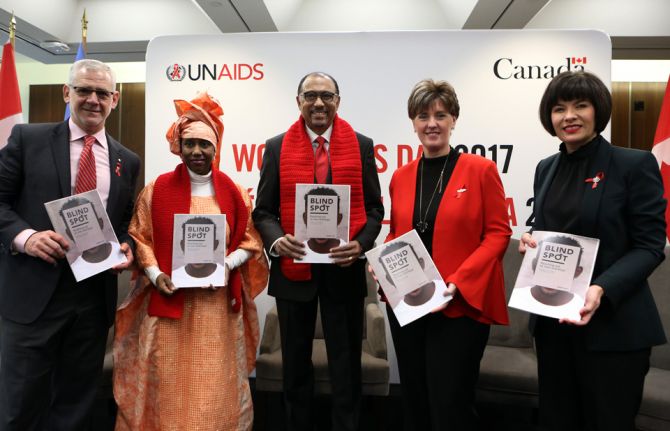
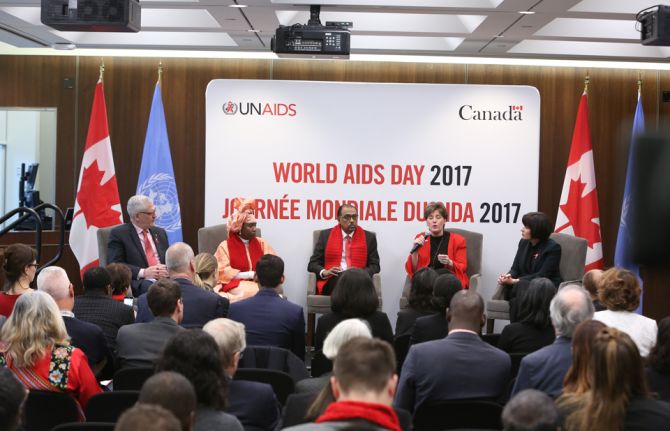
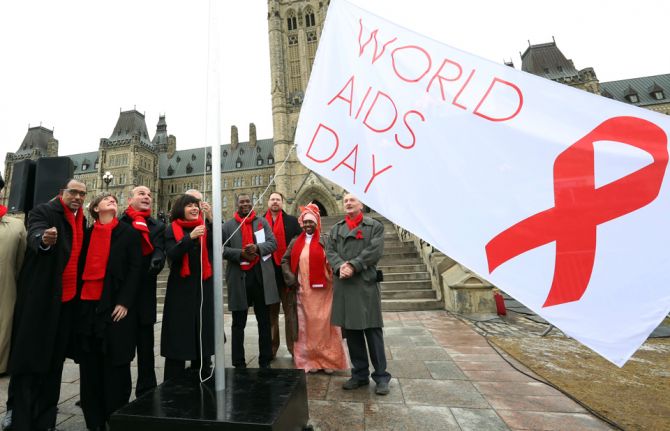
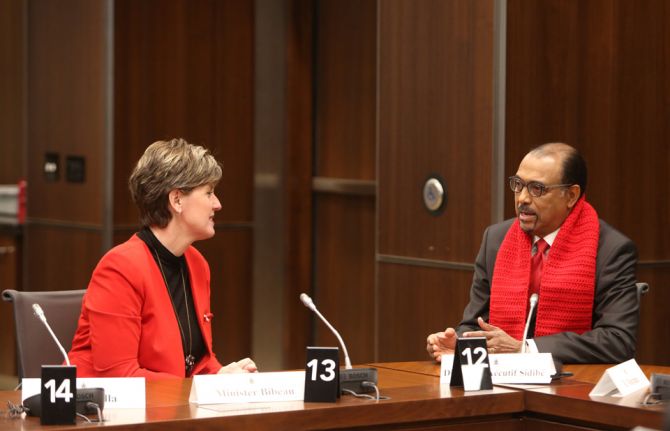
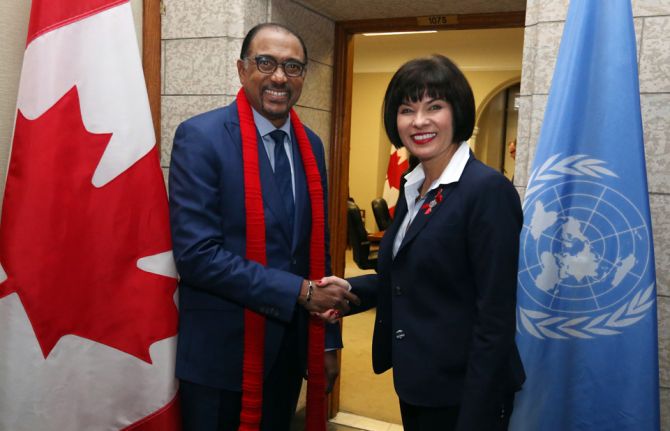
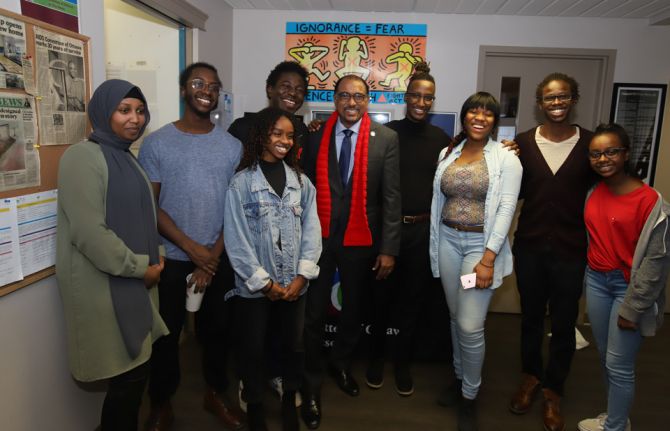
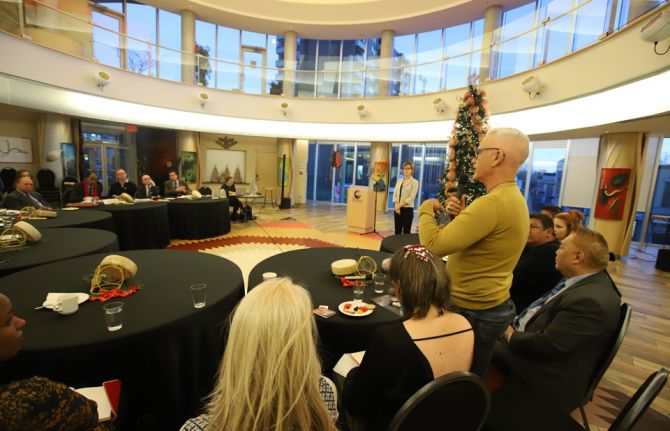
Update
Learning about the AIDS response in Canada
01 December 2017
01 December 2017 01 December 2017During a visit to Ottawa, Canada, from 29 November to 1 December, UNAIDS Executive Director Michel Sidibé discussed with government officials ways to strengthen collaboration with the Canadian Government and met with representatives of civil society.
Mr Sidibé visited the AIDS Committee of Ottawa to see first-hand how a frontline AIDS service organization is responding to the opioid crisis in Canada. At a round-table discussion with Canadian civil society organizations, the successes and challenges in the Canadian response to HIV were highlighted. During the discussion, Mr Sidibé stressed that a vibrant civil society was critical to scaling up responses towards universal access to HIV prevention, treatment, care and support.
Mr Sidibé also met Marie-Claude Bibeau, Minister of International Development and La Francophonie, and Diane Jacovella, Deputy Minister of International Development, who underlined the progress made in preventing new HIV infections and the important impact those efforts are having on women’s health, including the sexual and reproductive health and rights of women.
Mr Sidibé spoke with senior government officials during a town hall meeting on human rights-based approaches to health and how the response to HIV can be a catalyst for accelerating progress towards achieving the Sustainable Development Goals. He shared his vision and perspective on the opportunities towards ending AIDS and spoke about the recent reform of UNAIDS. The link between sexual and reproductive health and HIV was discussed, as was the need for greater efficiencies and reform in the global health architecture.
Mr Sidibé also met the Minister of Health, Ginette Petitpas Taylor, and the Minister of Indigenous Services, Jane Philpott, to discuss the HIV epidemic in Canada and to hear their perspectives on the current needs and challenges of the AIDS response in the country, especially among indigenous populations. It was highlighted that tuberculosis and hepatitis are major causes of death among indigenous people in Canada. They discussed how cooperation between UNAIDS and Canada could help in addressing the special needs of indigenous people.
The visit ended on World AIDS Day with the launch of a groundbreaking report on increasing male engagement in health services and with Mr Sidibé raising a flag on Parliament Hill with Ms Bibeau, Ms Petitpas Taylor and representatives of people living with HIV.
Quotes
“We need Canadian leadership to achieve social justice and the end of the AIDS epidemic by 2030.”
“We must address the gender inequality that allows HIV to flourish—for women and girls, and for men and boys too. This year’s UNAIDS report tells us that men are less likely to take an HIV test or seek medical help when they are sick, and if they do access treatment, they are less likely to stick with it. We must do a better job of reaching our men and our youth with HIV services, both for them and for their partners and families.”
“Canada is committed to the UNAIDS 90–90–90 treatment targets and the goal of eliminating AIDS by 2030. We have important research and community-based projects across Canada that reflect our government’s focus on supporting prevention, reducing stigma and discrimination, and increasing access to testing and treatment for people living with HIV and other sexually transmitted and blood-borne infections.”
Region/country
Related
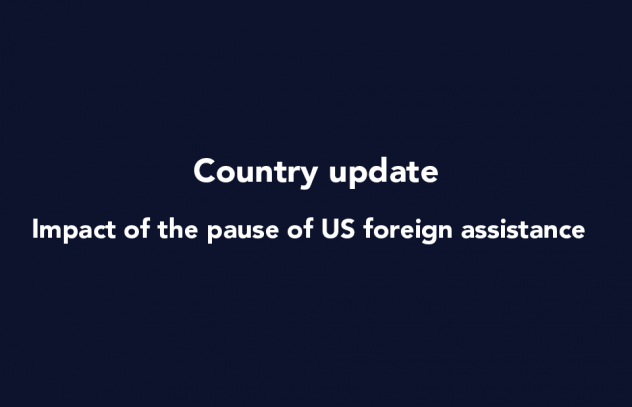 Government ensures continuity of treatment in Malawi
Government ensures continuity of treatment in Malawi

10 February 2025

Feature Story
In Mozambique, five adolescent and young girls receive a special award on World AIDS Day for winning the SMS BIZ/U-Report Girl-to-Girl competition
06 December 2017
06 December 2017 06 December 2017This story was originally published by UNICEF
In Mozambique there has been some progress in the fight against AIDS, notably in preventing mother to child transmission of HIV. But progress in preventing new HIV infections among adolescents (10-19) and improving testing and treatment in adolescent populations are still unacceptably slow.
Around 120,000 adolescents live with HIV (UNAIDS 2017). The data also reveals a worrying gender disparity: according to IMASIDA 2015, HIV prevalence among adolescent girls 15-19 is four times higher than for boys (6.5% vs 1.5%). Prevalence is also higher in urban areas than in rural. Young women have higher odds of HIV infection due to various factors including gender norms, reduced access to information, and age-disparate sex. Additionally, not knowing one’s HIV status and engaging in high risk practices predisposes young people to the risk of contracting HIV. This highlights the need for adolescents and young people to have access to appropriate information as they explore their sexuality.
The AIDS epidemic must remain a global public health concern, according to UNICEF and UNAIDS. Innovative solutions must be adopted to speed up progress in preventing HIV infection of children and adolescents and ensuring those living with HIV get the treatment they need.
In 2015, in the context of the youth-focused Sexual and Reproductive Health (SRH) and HIV prevention Geração Biz (Busy Generation) programme, UNICEF Mozambique partnered with line ministries of Youth and Sports; Health; Education and Human Development; UNFPA and the youth association Coalizão (Youth Coalition) to adapt the SMS-based technology for development platform U-Report and roll out the programme known as SMS BIZ. This was aimed at improving adolescent and young people’s access to comprehensive and personalised SRH and HIV information through SMS (for more information visit http://mozambique.ureport.in/).
SMS BIZ partners set up a counselling hub managed by Coalizão with 24 trained peer counsellors, equipped with ICT facilities and a reference guide on SRH, HIV and Gender-based Violence (GBV) prevention to facilitate their capability to respond to adolescents queries. The counseling service is totally anonymous so neither the counsellors nor users can identify the other. Counsellors respond to about 1,000 questions daily. A total of 350,000 questions were responded to date. Communication and promotion materials were developed to promote the counselling service while advocacy sessions were held in selected provinces in order to create synergies with different stakeholders. Partnerships with the three Telecom Operators allowed SMS BIZ partners to count on free un-limited SMS for the period of 2017-2020.
In only two years, SMS BIZ/U-Report, has exceeded expectations with over 110,000 active adolescents and youth registered by September 2017, using the services for information on topics relevant to them.
Adolescents and young people registered have been engaged in discussions addressing misconceptions about SRH, HIV prevention and treatment, and increasing uptake and linkages to HIV and GBV services. Results from a poll show positive results, with 65% of adolescents and young people that responded to the poll were referred and adhered to health facilities during the counselling session for additional individual face-to-face counselling, consultation or treatment.
However, until recently, the challenge has been attracting as many girls as boys to the platform with a ratio of 60% boys - 40% girls. Raima Francisco Manjate, one of the SMS BIZ/U-Report stellar peer counsellors officially launched the Girl-to-Girl invite system on the International Day of the Girl Child on October 11th, with an intervention at the National Girls Conference organized in the context of the UN Joint programme Action for Girls, funded by the Swedish Government. The results have been outstanding: in 72 hours, more than 8,600 girls were successfully registered, the girls' user population grew from 4% to 44%, with five girls registering more than 50 friends and winning the competition.
Today, the total number of SMS BIZ/U-Report users reached 130,000.
The five adolescent and young girls, winners of the competition, have been awarded today at the World AIDS Day Celebrations, in Maputo and in the provincial capitals of Quelimane, Nampula and Beira in recognition of their efforts in mobilising friends to adhere to this important counselling service.
Neima Muianga, 20 years old and Cristina Djive, 18 years old, both from the capital Maputo, were the two girls awarded today at the WAD ceremony, by the following high-level dignitaries such as Mr. Carlos Agostinho do Rosario, Mozambique Prime Minister, Mr. Luiz Loures, UNAIDS Deputy Executive Director, Ms. Nazira Abdul, Health Minister and Ms. Clarisse Machanguana, UNICEF National Ambassador.
Neima was thrilled when she discovered she had won the competition: “I feel happy about it. I have sent various SMS to contact numbers on my list, my neighbours, church members and even girls or young women I would bump into in the streets. SMS BIZ is very important for us. I don’t feel comfortable speaking with my parents about sexuality as this is taboo in Mozambique”.
"It is an excellent example of how young people can empower each other through technologies and innovative projects. Girl-to-Girl (G2G) is the kind of innovation that has an essential role for gender equality and health as we work to leave no one behind in implementing the sustainable development goals," said Luiz Loures, UNAIDS Deputy Executive Director, Assistant Secretary-General of the United Nations.
Now that the SMS BIZ/U-Report initiative has been scaled up at national level, SMS BIZ partners expect to reach and engage approximately 400,000 adolescents and young people by 2020. According to Cristina “this initiative cannot stop. So far, it has been a great experience for us.”
Region/country

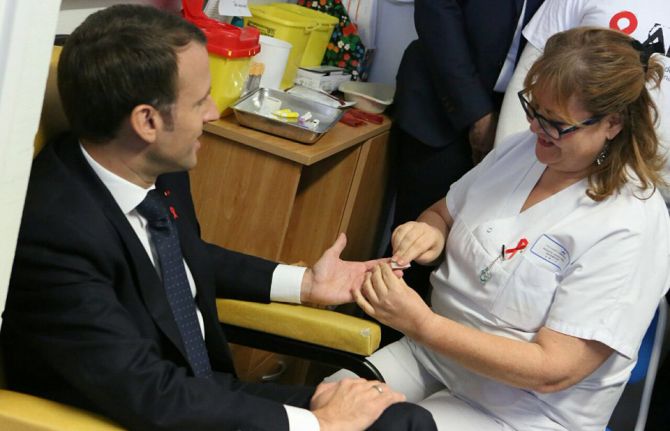
Update
UNAIDS congratulates the President of France for his leadership on AIDS
01 December 2017
01 December 2017 01 December 2017On World AIDS Day, the President of France, Emmanuel Macron, led by example by taking a HIV test.
Mr Macron and the First Lady of France, Brigitte Macron, visited a hospital in Saint Denis in northern Paris that caters to people in vulnerable situations, including migrants. Speaking after taking the HIV test, Mr Macron said, “We have not won the battle against AIDS. We need to protect ourselves, get tested, get treated and accept those in society who have HIV.”
Globally today, 40% of people living with HIV don’t know their HIV status. In France, one in five people living with HIV do not know their HIV status. The majority of new HIV infections in the country occur among gay men and other men who have sex with men.
“Emmanuel Macron is showing leadership in action. By publicly taking an HIV test, he has demonstrated French leadership on the right to health,” said Michel Sidibé, UNAIDS Executive Director. “France is a valued partner of UNAIDS.”
Earlier, on 28 November, Mr Macron renewed his commitment to the global AIDS response during a speech to young students at the University in Ouagadougou, Burkina Faso.
France has played a critical role in ensuring access to medicines globally through its contribution to the Global Fund to Fight AIDS, Tuberculosis and Malaria, to which it has donated more than US$ 4.8 billion. France also supported the creation of UNITAID in 2006.
These investments have yielded substantial results. Through global solidarity today nearly 21 million people have access to HIV treatment. In 2016, 53% of people living with HIV were on treatment.
Prévenir, dépister, continuer à soigner. #WorldAIDSDay pic.twitter.com/y2VTZitiOY
— Emmanuel Macron (@EmmanuelMacron) December 1, 2017
Region/country
Related
 Government ensures continuity of treatment in Malawi
Government ensures continuity of treatment in Malawi

10 February 2025

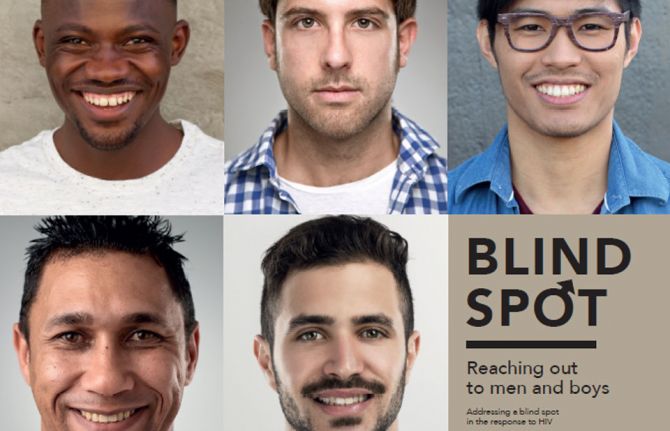
Press Release
On World AIDS Day, UNAIDS warns that men are less likely to access HIV treatment and more likely to die of AIDS-related illnesses
01 December 2017 01 December 2017New report from UNAIDS shows the blind spot in reaching men with HIV services
OTTAWA/GENEVA, 1 December 2017—On World AIDS Day, UNAIDS has released a new report showing that men are less likely to take an HIV test, less likely to access antiretroviral therapy and more likely to die of AIDS-related illnesses than women. The Blind spot shows that globally less than half of men living with HIV are on treatment, compared to 60% of women. Studies show that men are more likely than women to start treatment late, to interrupt treatment and to be lost to treatment follow-up.
“Addressing the inequalities that put women and girls at risk of HIV is at the forefront of the AIDS response,” said Michel Sidibé, Executive Director of UNAIDS. “But there is a blind spot for men—men are not using services to prevent HIV or to test for HIV and are not accessing treatment on the scale that women are.”
In sub-Saharan Africa, men and boys living with HIV are 20% less likely than women and girls living with HIV to know their HIV status, and 27% less likely to be accessing treatment. In KwaZulu-Natal, the province with the highest HIV prevalence in South Africa, only one in four men aged 20–24 years living with HIV in 2015 knew that they had the virus.
In western and central Africa, a region that is struggling to respond effectively to HIV, only 25% of men living with HIV are accessing treatment. When people are not on treatment they are more likely to transmit HIV.
“When men access HIV prevention and treatment services, there is a triple dividend,” said Mr Sidibé. “They protect themselves, they protect their sexual partners and they protect their families.”
The report highlights data from sub-Saharan Africa that show that condom use during sex with a non-regular partner is low among older men, who are also more likely to be living with HIV—50% of men aged 40–44 years and 90% of men aged 55–59 years reported not using a condom. These data are consistent with studies showing a cycle of HIV transmission from older men to younger women, and from adult women to adult men of a similar age in places with high HIV prevalence.
The Blind spot also shows that HIV prevalence is consistently higher among men within key populations. Outside of eastern and southern Africa, 60% of all new HIV infections among adults are among men. The report outlines the particular difficulties men in key populations face in accessing HIV services, including discrimination, harassment and denial of health services.
Men who have sex with men are 24 times more likely to acquire HIV than men in the general population and in over two dozen countries HIV prevalence among men who have sex with men is 15% or higher. However, recent studies suggest that condom use is dropping in Australia, Europe and the United States of America. In the United States, for example, the percentage of HIV-negative gay men and other men who have sex with men who engage in sex without using condoms increased from 35% to 41% between 2011 and 2014.
“We cannot let complacency set in,” said Mr Sidibé. “If complacency sets in, HIV will take hold and our hopes of ending AIDS by 2030 will be shattered.”
The Blind spot shows that around 80% of the 11.8 million people who inject drugs are men and that HIV prevalence among people who inject drugs exceeds 25% in several countries. Condom use is almost universally low among people who inject drugs and the percentage of men who inject drugs using sterile injecting equipment during their last drug injection varies from country to country. In Ukraine, for example, the percentage of men who inject drugs who used a sterile needle at last injection was well over 90%, whereas in the United States only around 35% used a sterile needle.
In prisons, where 90% of detainees are men, HIV prevalence is estimated at between 3% and 8%, yet condoms and harm reduction services are rarely made available to detainees.
While HIV testing has been able to reach women, particularly women using antenatal services, the same entry points have not been found for men, limiting uptake of HIV testing among men.
“The concept of harmful masculinity and male stereotypes create conditions that make having safer sex, taking an HIV test, accessing and adhering to treatment—or even having conversations about sexuality—a challenge for men,” said Mr Sidibé. “But men need to take responsibility. This bravado is costing lives.”
The report shows the need to invest in boys and girls at an early age, ensuring that they have access to age-appropriate comprehensive sexuality education that addresses gender equality and is based on human rights, creating healthy relationships and promoting heath-seeking behaviour for both girls and boys.
The report shows that men visit health-care facilities less frequently than women, have fewer health checks and are diagnosed with life-threatening conditions at later stages than women. In Uganda, some men reported they would rather avoid knowing their HIV status and receiving life-saving treatment because they associated being HIV-positive with emasculating stigma. One study in South Africa showed that 70% of men who had died from AIDS-related illnesses had never sought care for HIV.
The report urges HIV programmes to boost men’s use of health services and to make services more easily available to men. This includes making tailored health services available, including extending operating hours, using pharmacies to deliver health services to men, reaching men in their places of work and leisure, including pubs and sports clubs, and using new communications technologies, such as mobile phone apps.
It also urges a supportive legal and policy environment that addresses the common barriers to accessing HIV services, especially for key populations, and can accommodate the diverse needs and realities of men and boys.
The Blind spot shows that by enabling men to stay free from HIV, get tested regularly and start and stay on treatment if HIV-positive, the benefits will not only improve male health outcomes, but will contribute to declines in new HIV infections among women and girls and to altering harmful gender norms.
In 2016 (*June 2017) an estimated:
*20.9 million [18.4 million–21.7 million] people were accessing antiretroviral therapy
36.7 million [30.8 million–42.9 million] people globally were living with HIV
1.8 million [1.6 million–2.1 million] people became newly infected with HIV
1.0 million [830 000–1.2 million] people died from AIDS-related illnesses
UNAIDS
The Joint United Nations Programme on HIV/AIDS (UNAIDS) leads and inspires the world to achieve its shared vision of zero new HIV infections, zero discrimination and zero AIDS-related deaths. UNAIDS unites the efforts of 11 UN organizations—UNHCR, UNICEF, WFP, UNDP, UNFPA, UNODC, UN Women, ILO, UNESCO, WHO and the World Bank—and works closely with global and national partners towards ending the AIDS epidemic by 2030 as part of the Sustainable Development Goals. Learn more at unaids.org and connect with us on Facebook, Twitter, Instagram and YouTube.
Contact
UNAIDS CanadaSophie Barton-Knott
tel. +41 79 514 6896
bartonknotts@unaids.org
UNAIDS Geneva
Alinka Brutsch
tel. +41 22 791 1647
brutscha@unaids.org
UNAIDS Communications
communications@unaids.org
Press centre
Download the printable version (PDF)
Documents
Addressing a blind spot in the response to HIV — Reaching out to men and boys
30 November 2017
In a world of gender inequalities that disadvantage women and girls, publishing a report on how men are not being reached by health services and are not exercising their right to health may seem counterintuitive. It was indeed perplexing for me to learn that men were less likely than women to know their HIV status and less likely to access and adhere to HIV treatment. As a consequence, more men are likely to die of AIDS-related illnesses than women. As the world strives to reach the high levels of HIV service coverage required to end AIDS as a public health threat, this blind spot in the response to HIV can no longer be ignored.

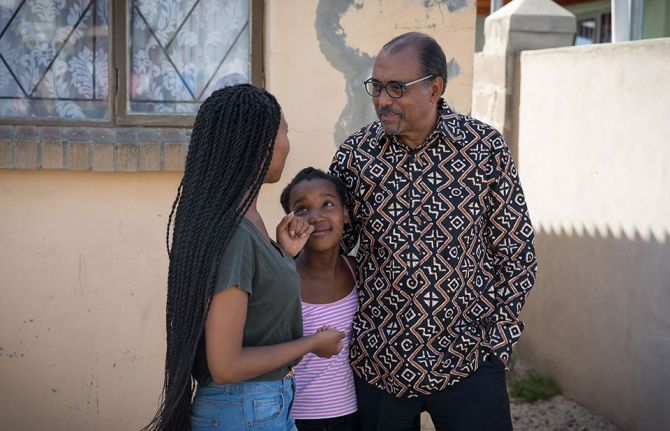
Press Statement
World AIDS Day message from UNAIDS Executive Director
24 November 2017 24 November 20171 December 2017
Michel Sidibé
Executive Director of UNAIDS
Under-Secretary-General of the United Nations
This World AIDS Day, we are highlighting the importance of the right to health and the challenges that people living with and affected by HIV face in fulfilling that right.
The right to health is a fundamental human right—everybody has the right to the enjoyment of the highest attainable standard of physical and mental health, as enshrined in the International Covenant on Economic, Social and Cultural Rights.
The world will not achieve the Sustainable Development Goals—which include the target of ending AIDS by 2030—without people attaining their right to health. The right to health is interrelated with a range of other rights, including the rights to sanitation, food, decent housing, healthy working conditions and a clean environment.
The right to health means many different things: that no one person has a greater right to health care than anyone else; that there is adequate health-care infrastructure; that health-care services are respectful and non-discriminatory; and that health care must be medically appropriate and of good quality. But the right to health is more than that—by attaining the right to health, people’s dreams and promises can be fulfilled.
On every World AIDS Day, we look back to remember our family members and friends who have died from AIDS-related illnesses and recommit our solidarity with all who are living with or affected by HIV.
From the beginning, the AIDS response was built on the fundamental right to health and well-being. The AIDS community advocated for rights-based systems for health and to accelerate efforts for the world to understand HIV: how to prevent it and how to treat it.
Too many people—especially those who are the most marginalized and most affected by HIV—still face challenges in accessing the health and social services they urgently need. We all must continue to stand shoulder to shoulder with the people being left behind and demand that no one is denied their human rights.
This year has seen significant steps on the way to meeting the 90–90–90 treatment targets towards ending AIDS by 2030. Nearly 21 million people living with HIV are now on treatment and new HIV infections and AIDS-related deaths are declining in many parts of the world. But we shouldn’t be complacent. In eastern Europe and central Asia, new HIV infections have risen by 60% since 2010 and AIDS-related deaths by 27%. Western and central Africa is still being left behind. Two out of three people are not accessing treatment. We cannot have a two-speed approach to ending AIDS.
For all the successes, AIDS is not yet over. But by ensuring that everyone, everywhere accesses their right to health, it can be.
UNAIDS
The Joint United Nations Programme on HIV/AIDS (UNAIDS) leads and inspires the world to achieve its shared vision of zero new HIV infections, zero discrimination and zero AIDS-related deaths. UNAIDS unites the efforts of 11 UN organizations—UNHCR, UNICEF, WFP, UNDP, UNFPA, UNODC, UN Women, ILO, UNESCO, WHO and the World Bank—and works closely with global and national partners towards ending the AIDS epidemic by 2030 as part of the Sustainable Development Goals. Learn more at unaids.org and connect with us on Facebook, Twitter, Instagram and YouTube.
Press centre
Download the printable version (PDF)

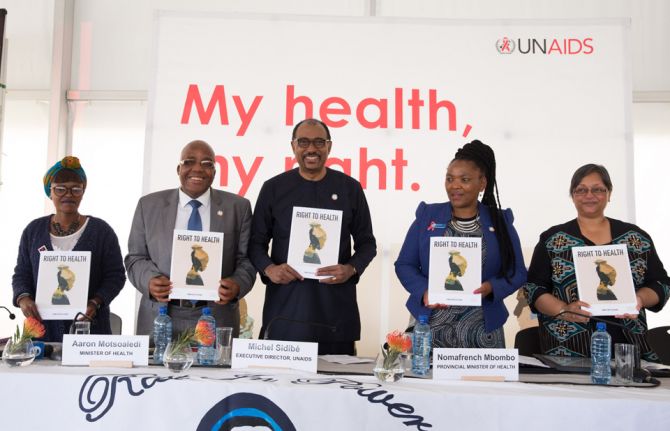
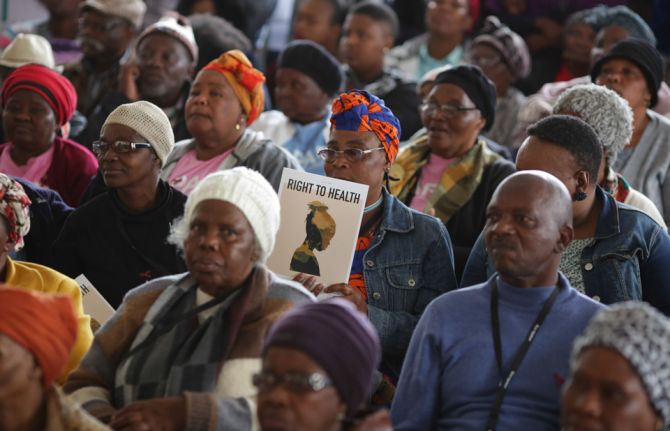
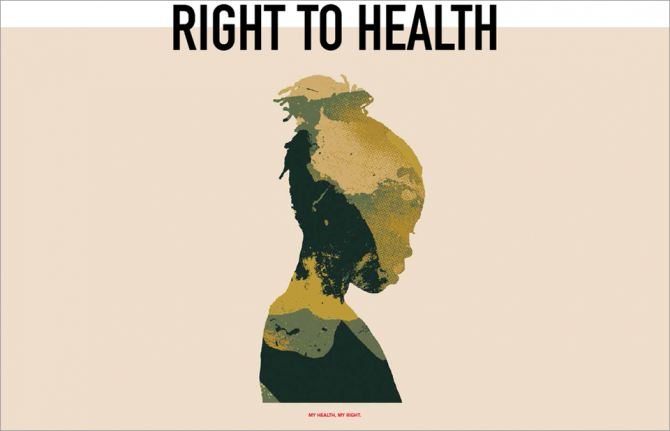
Press Release
UNAIDS announces nearly 21 million people living with HIV now on treatment
20 November 2017 20 November 2017New report from UNAIDS highlights the right to health as the key to ending AIDS
CAPE TOWN/GENEVA, 20 November 2017—Remarkable progress is being made on HIV treatment. Ahead of World AIDS Day, UNAIDS has launched a new report showing that access to treatment has risen significantly. In 2000, just 685 000 people living with HIV had access to antiretroviral therapy. By June 2017, around 20.9 million people had access to the life-saving medicines. Such a dramatic scale-up could not have happened without the courage and determination of people living with HIV demanding and claiming their rights, backed up by steady, strong leadership and financial commitment.
“Many people do not remember that in 2000 there were only 90 people in South Africa on treatment,” said Michel Sidibé, Executive Director of UNAIDS, speaking in Khayelitsha, South Africa. “Today, South Africa has the biggest life-saving treatment programme in the world, with more than 4 million people on treatment. This is the kind of acceleration we need to encourage, sustain and replicate.”
The rise in the number of people on treatment is keeping more people living with HIV alive and well. Scientific research has also shown that a person living with HIV who is adhering to an effective regime of antiretroviral therapy is up to 97% less likely to transmit HIV. As treatment access has been scaled up for pregnant women living with HIV, new HIV infections among children have been rapidly reduced. From 2010 to 2016, new HIV infections among children were reduced by 56% in eastern and southern Africa, the region most affected by HIV, and by 47% globally.
“In 2001, the first person in Khayelitsha started HIV treatment. Today, there are almost 42 000 people on treatment here. The success of Khayelitsha’s treatment programme is a microcosm of the massive success of South Africa’s HIV programme,” said Aaron Motsoaledi, Minister of Health, South Africa.
The challenges now are to ensure that the 15.8 million people in need of treatment—based on the number of people living with HIV at the end of 2016—can access the medicines and to put HIV prevention back at the top of public health programming, particularly in the countries in which new HIV infections are rising.
The new report from UNAIDS, Right to health, highlights that the people most marginalized in society and most affected by HIV are still facing major challenges in accessing the health and social services they urgently need. However, the report also gives innovative examples of how marginalized communities are responding.
In India, for example, a collective of sex workers has trained sex workers to work as nursing assistants, providing stigma-free health services to sex workers and the wider community. In Uganda, groups of grandmothers are weaving and selling traditional baskets to allow them to pay for schooling for the grandchildren in their care who lost their parents to AIDS.
In 2016, around 1.8 million people were newly infected with HIV, a 39% decrease from the 3 million who became newly infected at the peak of the epidemic in the late 1990s. In sub-Saharan Africa, new HIV infections have fallen by 48% since 2000.
However, new HIV infections are rising at a rapid pace in countries that have not expanded health and HIV services to the areas and the populations where they are most effective. In eastern Europe and central Asia, for example, new HIV infections have risen by 60% since 2010 and AIDS-related deaths by 27%.
References to the right to health are found in international and regional laws, treaties, United Nations declarations and national laws and constitutions across the globe. The right to health is defined in Article 12 of the International Covenant on Economic, Social and Cultural Rights as the right of everyone to the enjoyment of the highest attainable standard of physical and mental health. This includes the right of everyone, including people living with and affected by HIV, to the prevention and treatment of ill health, to make decisions about one’s own health and to be treated with respect and dignity and without discrimination.
UNAIDS’ Right to health report makes it clear that states have basic human rights obligations to respect, protect and fulfil the right to health.
The report gives voice to the communities most affected by HIV—including people living with HIV, sex workers, people who use drugs, gay men and other men who have sex with men and young people—on what the right to health means to them.
“Almost 20 years ago, the struggle was about access to treatment. Now, my struggle is not only about access but about ensuring that I have the support that I need to live a healthy and positive life. That is my right to health,” said Cindy Mguye, civil society representative.
Wherever the right to health is compromised, HIV spreads. In sub-Saharan Africa, for example, 67% of new HIV infections among young people are among young women and girls aged between 15 and 24 years. Studies have shown that a large number of young women and girls in the region contract HIV from older men, demonstrating multiple concerns about the ability of young women and girls to negotiate safer sex, stay in education and access age-appropriate sexual and reproductive health services.
Studies have also shown the difficulties health services face in reaching men with HIV testing and treatment, as well as broader health services, showing the challenge in encouraging men to exercise their right to health. In 2016, men in sub-Saharan Africa were 18% less likely to be accessing treatment and 8% more likely to die from AIDS-related illnesses than women.
The Right to health gives a clear demonstration of the challenges ahead in efforts to end the AIDS epidemic as a public health threat by 2030, as outlined in the 2016 United Nations Political Declaration on Ending AIDS.
The report underscores that to reduce new HIV infections and AIDS-related deaths and ensure access to essential health services, funding for health needs to increase. It gives examples of how to enhance funding, including increasing the share of health spending as a proportion of national economies, making savings through efficiencies and partnering with the private sector. The funding gap for HIV is estimated at US$ 7 billion by 2020.
UNAIDS has set an agenda to Fast-Track the response to HIV by 2020 towards ending the AIDS epidemic as a public health threat by 2030. It will continue to work closely with its Cosponsors and partners to ensure that everyone, everywhere can fulfil their right to health and can access the health and social services they need.
In 2016 (*June 2017) an estimated:
*20.9 million [18.4 million–21.7 million] people were accessing antiretroviral therapy (in June 2017)
36.7 million [30.8 million–42.9 million] people globally were living with HIV
1.8 million [1.6 million–2.1 million] people became newly infected with HIV
1.0 million [830 000–1.2 million] people died from AIDS-related illnesses
UNAIDS
The Joint United Nations Programme on HIV/AIDS (UNAIDS) leads and inspires the world to achieve its shared vision of zero new HIV infections, zero discrimination and zero AIDS-related deaths. UNAIDS unites the efforts of 11 UN organizations—UNHCR, UNICEF, WFP, UNDP, UNFPA, UNODC, UN Women, ILO, UNESCO, WHO and the World Bank—and works closely with global and national partners towards ending the AIDS epidemic by 2030 as part of the Sustainable Development Goals. Learn more at unaids.org and connect with us on Facebook, Twitter, Instagram and YouTube.
Contact
UNAIDS South AfricaNatalie Ridgard
tel. +27 82 909 2637
ridgardn@unaids.org
UNAIDS Communications
tel. +41 22 791 3873
communications@unaids.org
Related publications
Press centre
Download the printable version (PDF)

